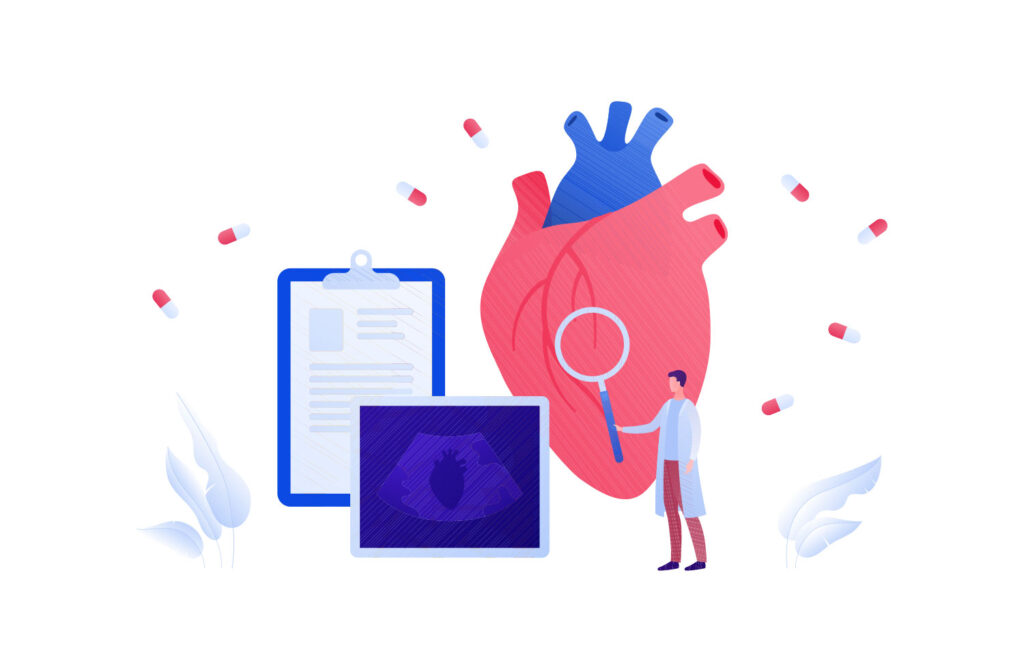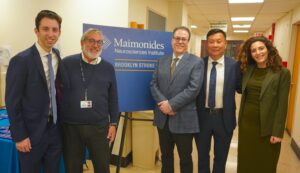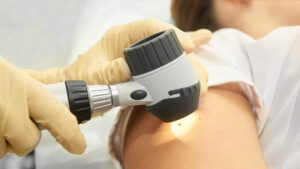Summary
Maimonides Medical Center has been named among America’s Top 50 Cardiac Surgery Hospitals, according to Healthgrades. The work with TAVR or transcatheter aortic valve replacement are among the sophisticated processes that helped them get there. Listen to Dr. Gregory Crooke and Dr. Robert Frankel discuss this life-changing procedure alternative to traditional valve replacement.
Listen on Spotify Listen on Apple Podcasts Listen on Google Podcasts
Transcript
Joey Wahler (Host): Maimonides Medical Center has been named among America’s 50 best for cardiac surgery by health grades, largely for their work with TAVR T A V R, which is transcatheter aortic valve replacement. So we’re discussing this life changing alternative to traditional valve replacement. This is MAIMO Med Talk. Thanks for listening. I’m Joey Wahler. Our guests from Maimonides, Dr. Robert Frankel, an interventional cardiologist and medical director of their transcatheter valve program. And Dr. Gregory Crooke, a cardiothoracic surgeon and surgical director of their transcatheter valve program. Doctors thanks for joining us. First for you, Dr. Frankel. So what exactly is TAVR in a nutshell, and what patients are the candidates for it?
Dr Robert Frankel: So TAVR, is a transcatheter aortic valve replacement. And it is a catheter based procedure where we go ahead and place an aortic valve into the patient’s own aortic valve without having to open up the chest, which has always been the standard of care for many, many years. So the type of patient that’s most suited to this procedure. Initially we did it on very sick patients who were not good candidates for an open heart procedure. Somebody that was frail, usually elderly, and was prohibitive risk for an open surgical procedure.
So for this population, this procedure, was a real game changer because these patients really did not have an option. Subsequent to that, we started to do it on younger and healthier patients. there were multiple studies to show that in lower risk patients and intermediate risk patients, that this was a great technology. So where it started out on only very high risk patients who were not good surgical candidates, it has expanded to those patients who are even low risk for surgical procedure, are now good candidates for the TAVR procedure.
Joey Wahler (Host): And Dr. Frankel, what would you say are the main advantages of that versus what’s been done previously for those same younger patient?
Dr Robert Frankel: So the biggest advantage to this procedure is the recovery. We’re able to put this device in with minimal discomfort. The patients are asleep, they don’t feel a thing. And the recovery is literally within a day or two. Today we’re doing this procedure and most patients can go home the very next day, which is just incredible. If you think back about 12 years ago, before this procedure was available. All patients had to stay for an open heart procedure, which meant opening up the chest, which would usually be about a week in the hospital.
And then several weeks recovering at home. Today we can do this procedure on an elderly patient. You can go home the very next day and within two or three days, they’re back doing everything that they want to do. So it’s been a great, great procedure in terms of its recovery. That’s really the main advantage to this procedure over surgical procedure.
Joey Wahler (Host): Wow. That is pretty amazing. So for you, Dr. Crooke, it’s the 10th anniversary of performing TAVR at my commodes medical center. So congrat. On that, how has the procedure evolved most to perfect it during that?
Dr Gregory Crooke: Well, as many aspects to that, TAVR first became commercially available in the United States after its pivotal trials. 10 years ago, when we were among the first to do this in the country, after it became commercially available and improved by the FDA and several aspects that have led to improvements one. There’s the operator experience. And as you’ve done hundreds and hundreds of these, you develop judgment and knowledge and skills that allow you to do it safer. Second of all, is the equipment has improved.
We’re on our fourth generation devices now, they’re much less traumatic and much less invasive, and the results have improved with every generation of device. So it’s both a technological advantage as well as a physician skill judgment advantage.
Joey Wahler (Host): Dr Frankel, Maimonides has actually performed more than 700 successful TAVR procedures. From what I understand that earning a prestigious three star rating from the society of thoracic surgeons. So why would you say so many patients are choosing your team for heart care?
Dr Robert Frankel: So we’ve been working together, Dr. Crooke and I, since the inception and the FDA approval of this device. so our team is very cohesive. It’s a very small team, that works very well together. So we’re very well coordinated, and we give spectacular, care. And we’re meticulous about how we perform this procedure. We do the same thing pretty much every time, we are w orking together in synchrony. And, I think that’s probably the best reason why people, come to my monitor is for the out and that’s how come we get these outstanding outcomes.
Joey Wahler (Host): Yeah, I guess there’s no substitute for experience as they say. How about you, Dr. Crooke? What about the dramatic difference that you two see in patients lives after undergoing TAVR?
Dr Gregory Crooke: Well, aortic stenosis, which is the disease. TAVR treats is a very disabling disease. And as Dr. Frankel mentioned earlier in the past, we had to do open heart surgery. Stop the heart, cut out the old valve. Now we just go in catheter based and replaced the valve with minimal trauma. And we see those patients getting better and getting their lives back very quickly after surgery, they don’t have to get through the period of being much sicker and then recovering for an operation to feel better. They just go home and feel better. And that’s remarkable.
Joey Wahler (Host): So as someone that helps saves lot save lives on a daily basis, how rewarding for you to be able to see that?
Dr Gregory Crooke: Well, it’s phenomenal because as part of our discussion with patients and families. We tell ’em about the consequences of not intervening on the valve. Cuz there always is a little bit of risk of replacing the valve, but the consequences and that lives lost from not treating this disease is very measurable and very well. So there is a dramatic benefit to the patient and it makes it very rewarding as physicians.
Joey Wahler (Host): How about for you, Dr. Frankel, what’s the most rewarding part when you do this great work?
Dr Robert Frankel: So we change people’s lives for the better, so there’s a major quality improvement. So we take patients who can hardly walk a block, can’t go up a flight of stairs, and have been admitted to the hospital oftentimes for heart failure or passing out, And once we do this procedure, these patients are able to go back to a normal lifestyle. They can go back to work. they can play with their grandchildren. They can walk up the flight of stairs now without being short of breath. And so one major issue is improving the quality of life.
And I think that’s one of the most rewarding things for us to see somebody that’s really, debilitated from this disease. The second aspect as Greg mentioned, is that, we improve the longevity. Not treating aortic stenosis has a worse prognosis than most cancers that you can think of. And once people are symptomatic from the aortic valve within two years, half those patients pass on, they’re not with us any longer. And once we can put that valve in place, we can reduce that number of patients who, have a demise and can live a much longer and healthier lifestyle. So both for the perspective of quality of life and then increasing the longevity that’s where see the most value in my patients with this device.
Joey Wahler (Host): Dr. Crooke, you two have talked already about some of the evolution of this procedure. So where do you think it’s headed from here on, in the near future and along those lines, what additional patients might it eventually benefit as well?
Dr Gregory Crooke: Well, I think transcatheter valve is just beginning, and over the next 10 years or so we’re gonna see marked improvements. First of all, we’re gonna see people with leaky aortic valves be able to be addressed, which is something we cannot do yet. We don’t have the technology, but that’s coming. And they’re already doing that in Europe. Second of all, we’re gonna see us be able to treat other valves, especially valves in patients who are very high risk, like their early TAVR patients, that people don’t want to go back in, maybe on a reoperation or even a primary operation that carries a 10% risk of not surviving the operation.
We’ll be able to offer valve surgery for people with other valves that are prohibitive risk, such as the leaky tri cuspid valve years after prior open heart surgery or a stenotic mitral valve in somebody who was in their eighties and really not a candidate for surgery. And again, we expect that to roll downhill, to be able to help less and less sick patients as those technologies improve. So I think we’re at the Dawn of a new age with valve replacement therapies.
Joey Wahler (Host): Couple of other things. And then we’ll let you go. For you, Dr. Frankel, how about in general, any other exciting trends right now happening in the cardiac world that perhaps involve. Another procedure that could be a similar game changer for you guys?
Dr Robert Frankel: So along the lines of, structural heart and valves as Dr. Crook mentioned, there are four major valves in the heart. And this technology really is the only, approved device for the aortic valve leaving the other three valves untreated with a catheter at the present time. So we hope, and I know that they are working on it now, there are trials ongoing to use this type of a valve and a similar type of a valve to try to treat the other heart valves that we have in our body that do fail. So at the present time, if we have patients that have. Multiple valves that fail. And we do see that.
And Dr. Crooke does sometimes replace more than one valve in an open heart surgical procedure. As the technology gets better and better, we’ll be able to have multiple catheter devices to treat multiple valves. And I think that’s on the horizon. And I think that will, prevent some of our patients who have to go to surgery now because they have additional valve problems in the future. Once we have a solution with a catheter based valve for the other valves, We can keep our patients, out of the surgical arena and can treat them completely multiple valves with multiple catheter valves.
Joey Wahler (Host): And Dr. Crook, what’s your overall takeaway message for those listening concerning TAVR that we’ve discussed here today?
Dr Gregory Crooke: Well, I mean, I think. Many of us who were surgeons thought 10, 12 years ago, that this technology would not really amount to much because some of the obstacles we saw, but it’s really been disruptive technology. It’s been a game changer, it’s success is beyond anybody’s imagination and that’s gonna continue to be now the gold standard to which all the therapies are gonna start to be compared. There are far and fewer patients needing open heart surgery to treat this very disabling disease. And I think we’re gonna get better and better on it. Along with technological advancements, both in imaging, as well as the devices we put in.
Joey Wahler (Host): Well folks we trust. You’re now more familiar with TAVR and how it’s benefiting heart patients in such a dramatic way. Doctors, Robert Frankel and Gregory Crooke. Thanks so much again. And for more information, please visit maimo.org. That’s maimo.org or call 718-283-8651 that’s 718-283-8651. If you found this podcast helpful, please do share it on your social media. And thanks again for listening to MAIMO Med Talk, hoping your health is good health. I’m Joey Wahler, .







